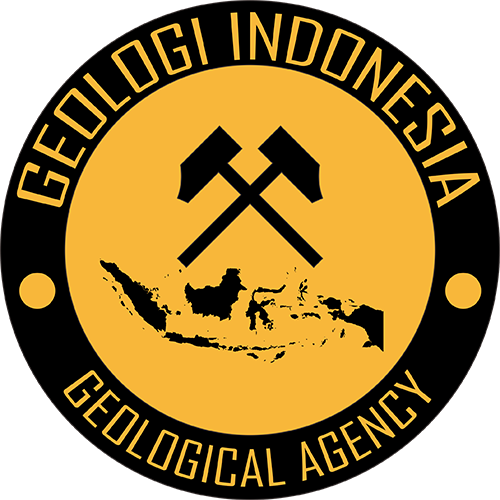Basin with Geology and Geophysics Data
Basin Status
Transtensional Marginal Oceanic Basin
Tectonic Setting
0
Area (km2)
0
Visitor Count
0
Likes
Prospectivity & Resources
of
Selabangka Basin
Basin Capacity
Data based on
18 Oct 2024
Oil
N/A
MMBO
(Million Barrels of Oil)
Gas
N/A
TCF
(Trillion Cubic Feet)
Resources
Data based on
18 Oct 2024
Oil
Conventional N/A
Conventional N/A
MMBO
(Million Barrels of Oil)
Gas
Conventional N/A
Conventional N/A
TCF
(Trillion Cubic Feet)
Oil
Unconventional N/A
Unconventional N/A
MMBO
(Million Barrels of Oil)
Gas
Unconventional N/A
Unconventional N/A
TCF
(Trillion Cubic Feet)
Executive Summary
of
Selabangka Basin
Description
Version
1
Published Date
20 Jan 2023
Uploaded Date
-
Photos
Some footage of Selabangka Basin
Introduction
Preliminary details of Selabangka Basin
Data based on:
20 Jan 2023
Exploration History
Detailed history of Selabangka Basin
Data based on:
20 Jan 2023
Regional Geology
Detailed regional geology of Selabangka Basin
The regional seismic section of the off-shore Selabangka area shows that the presence of Tertiary sediments is thin and dwindling to the southeast. This shows that the area that can still be hoped for is the northern part of the Selabangka Offshore area.
Data based on:
20 Jan 2023
Petroleum System
Detailed petroleum system of Selabangka Basin
Petroleum systems that may develop in Selabangka Offshore by taking the continuity of the tectonic conditions of the Matindok Block, it is found that the possibility of the type of play that develops in Selabangka Offshore is relatively the same. One type of play that may develop is Miocene Carbonates on Wrench-Related Structure formed by the Matindok Formation as a source rock, with a target of Miocene carbonate rock reservoirs. These rifts develop from the northern area of the Matindok Block and are found all the way to Selabangka Offshore. This type of play on seismic sections and depth maps is identified in several areas indicated by the presence of closures. Source rock in the Selabangka Offshore area probably comes from two sources, Tertiary rocks or Mesozoic sedimentary rocks. For Tertiary rocks, it is believed that the only possibility of producing hydrocarbons for this Tertiary system is shale from the Matindok Formation. The Matindok Formation develops in a limited distribution. Correlation results of the wells in the Matindok Block (North of Selabangka Offshore) indicate that the presence of source rock from the Matindok Formation may not be continuous or thinning to the south. This means that it is unlikely that the source rock developing in this area will come from the Matindok Formation. As for the Mesozoic rocks themselves in the seismic section it is difficult to be mapped, especially because there are no wells that have penetrated the Mesozoic clastic rocks around the study area. On the seismic section below the Tertiary sedimentary rock shows a chaotic appearance that is typical of a basement. Several identified leads are shown on the depth structure map and seismic sections. This lead was formed by a play similar to the Matindok Block in north Selabangka Offshore in the form of Miocene Carbonates on Wrench-Related Structure (BPKKA Pertamina, 1996). However, because the volumetric value of the identified leads is very small (even for P90), the calculation for speculative resources is not continued.
Data based on:
20 Jan 2023
Resources
Detailed resources of Selabangka Basin
-
Data based on:
20 Jan 2023
Petroleum System Chart
of
Selabangka Basin
Description
Version
1
Published Date
20 Jun 2023
Uploaded Date
20 Jun 2023
Petroleum System Chart
Petroleum system chart to Selabangka Basin
Montage
of
Selabangka Basin
Description
Version
-
Published Date
-
Uploaded Date
-
Montage
Detailed montage of Selabangka Basin
Reports & Publications
of
Selabangka Basin
Description
Version
1
Published Date
-
Uploaded Date
20 Jul 2023
Reports & Publications PDF
The PDF displayed is only pages 1 to 20. For a complete PDF, you can download it by clicking the download button.
Archives of Report & Publication
| Date | Report Description | Version | Doc | |
| 01 Nov 2020 | Rekomendasi Wilayah Keprospekan Migas Selabangka | 1 | Download PDF |
| Date | Publication Description | Version | Doc | |
| Oct 01, 2022 | Jurnal Cekungan Selabangka Tahun 2022 | 1.0 | Download | |
| Oct 07, 2021 | Jurnal Cekungan Selabangka Tahun 2021 | 2.0 | Download | |
| Oct 04, 2020 | Jurnal Cekungan Selabangka Tahun 2020 | 1.0 | Download | |
| Oct 01, 2019 | Jurnal Cekungan Selabangka Tahun 2019 | 1.0 | Download | |
| Oct 03, 2018 | Jurnal Cekungan Selabangka Tahun 2018 | 2.0 | Download | |
| Oct 04, 2017 | Jurnal Cekungan Selabangka Tahun 2017 | 1.0 | Download | |
| Oct 09, 2016 | Jurnal Cekungan Selabangka Tahun 2016 | 2.0 | Download | |
| Oct 02, 2015 | Jurnal Cekungan Selabangka Tahun 2015 | 2.0 | Download | |
| Oct 08, 2014 | Jurnal Cekungan Selabangka Tahun 2014 | 2.0 | Download | |
| Oct 08, 2013 | Jurnal Cekungan Selabangka Tahun 2013 | 2.0 | Download | |
| Oct 01, 2012 | Jurnal Cekungan Selabangka Tahun 2012 | 1.0 | Download |


